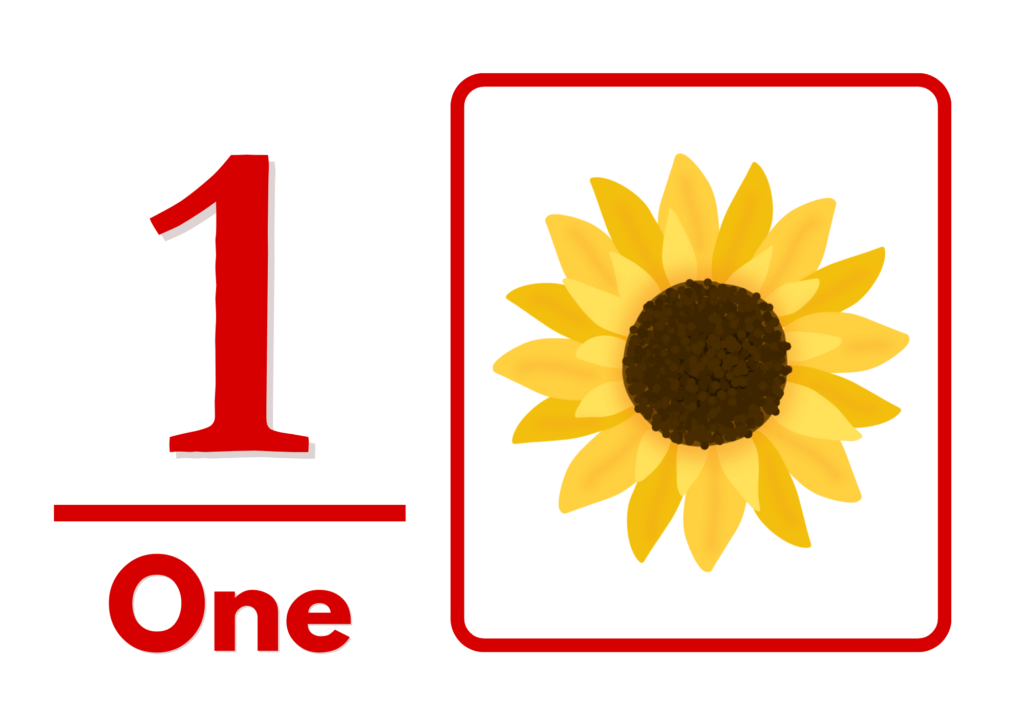Download our number 1 flashcard printable featured in our helpful learning guide; check out our top activities to help children learn how to read and write numbers.
Writing activities for kindergarten can help children build strong number recognition and formation skills, setting them up for success in math. Number tracing is an effective way to introduce the correct formation of the number 1 to little learners.
For example, you can find traceable worksheets or use lined paper with a bold 1 for them to trace over. Physical elements like numbered playdough mats can give young learners an engaging and tactile experience. Download our number 1 printable to get started.
Besides tracing, incorporating visual and auditory cues can further support your kindergarteners’ number writing journey. You can use songs or rhymes that emphasize the number 1 or employ pictures and stories that relate to it, giving them multiple opportunities to become writers. Remember to provide ample practice opportunities and encouragement for young students or aspiring English writers as they master writing the number one and other numbers.
Contents
Number One Activities for Kindergarten
Teaching children or new writers to understand numbers is essential. This foundation helps with math skills and number recognition later on. By engaging them in various learning activities, you can provide young learners with an effective way to enhance their understanding of the number one and upwards.
1. Counting Numbers
Start with basic counting activities. Use manipulatives like counting bears, cubes, or even small toys. This tactile approach allows children to hear the number sequence and feel and see the quantities they represent. Creating a number line in your classroom and using it during these activities helps reinforce their recognition of numerals.
2. Sensory Activities
Sensory activities like number writing in sand trays can help early learners write numbers. This method allows them to practice fine motor skills while engaging in a sensory-rich environment. As their confidence grows, you can introduce activities like number hunts or matching games that help children associate numerical values with their written forms.
Another essential aspect of understanding numbers in kindergarten is developing number sense. Introduce number sense activities, like working with a ten frame, to build their understanding of basic math operations. Using different strategies and materials, you can create engaging, hands-on experiences for your students to explore numbers and their relationships with one another.
3. Writing Practice
Give your students plenty of opportunities for number writing and engage them in tracing and copying activities. This will help them gain confidence in their number formation skills and solidify their understanding of numerals. Check out our guide with the best authors like Roald Dahl for kids.
4. Tracing The Number One
One of the most basic activities is having students trace the number 1 multiple times. This helps them understand the shape and movement required to write the number. For a more engaging tracing activity, use different colored pencils or ask students to trace over thick or thin lines.
5. Dot-to-Dot
Provide a dotted line number 1 for students to connect the dots to reveal the full numeral. This introduces sequencing. Cut out large foam or plastic numerals for students to use for copying. Having a three-dimensional model can help with formation. Ask students to write the number in different sizes, orientations, or materials like sand, shaving cream, or play dough.
6. Matching Games
Play matching games where students match pictures representing quantities to the corresponding written number. For number 1, use individual objects, photos of singular items, or drawings. This reinforces number-object relationships. The Number Match game for iPad offers a feature like this.
7. Scavenger hunt
Go on a number 1 scavenger hunt around the classroom. Provide clues for students to find objects or pictures representing quantity one. Coming across examples in real life can cement the concept.
These interactive activities allow students to practice writing the number 1 through tracing, copying, and associating the numeral with quantities – all-important foundations for number recognition. For more ideas, read our round-up of the best children’s book authors.
8. Read a Story About Number One
For the number 1, a fantastic book to share with young children is One by Kathryn Otoshi. This creative and colorful story uses numbers and colors to tell a tale about standing up for oneself and uniting against a bully. The main character, Blue, is often picked on by Red until One comes along and shows all the colors how to stand up and count.
This book introduces the concept of the number 1 in a simple and engaging way and teaches important lessons about courage, individuality, and the power of standing together. It’s an excellent choice for combining early numeracy skills with character education. For more, check out our round-up of the best Stan and Jan Berenstain books.
Download Our Number One Worksheet


If you found this post helpful, check out our letter printables and worksheets resource.
